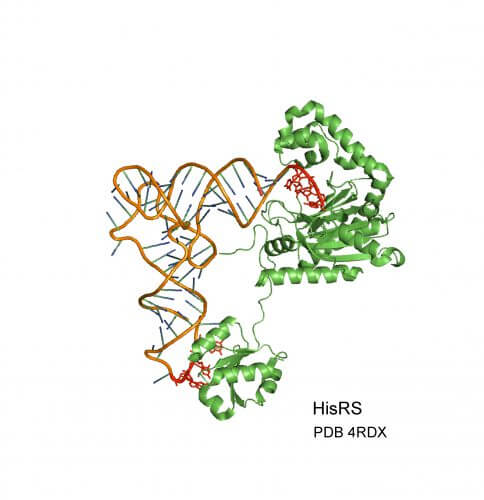According to the researchers, from the Faculty of Biology at the Technion, damage to this mechanism is responsible for many medical conditions

Researchers at the Faculty of Biology at the Technion discovered a sophisticated regulatory mechanism that optimizes the process of building proteins in the body. In their opinion, damage to this mechanism leads to many disease states, so the research findings may lead to a better understanding of biological disturbances and to the improvement of their treatment. The research was led by Prof. Yoav Araba and doctoral student Efri Levy.
Proteins are a central component of the human body and are built in the ribosome, the cellular factory. The ribosome uses two main components in the protein building process: the mRNA (the "messenger"), which contains the information necessary to build the protein, and the tRNA, which carries the amino acids - the raw materials needed to build the protein.
The research conducted at the Technion focused on a unique family of enzymes - aminoacyl synthetase enzymes - which play an important role in the correct connection of each amino acid to the corresponding tRNA molecule. The accuracy and efficiency of these enzymes are critical to the quality of the raw materials that reach the ribosome and therefore also to the quality of the future protein. Their role in this process has been studied for decades by many groups around the world, but the Technion researchers discovered another role of these enzymes that was not known until now.
Prof. Araba's research group discovered that in addition to connecting the amino acid to tRNA, the aforementioned enzymes know how to regulate their frequency according to the amount of available amino acids. When the amount of amino acids is high and a large amount of the enzyme is needed, the enzyme activates a mechanism that increases its production, and the opposite happens when a large amount of the enzyme is not needed. Moreover, the researchers deciphered the molecular mechanism that carries out this activity: the enzyme connects to "its" mRNA molecule in a tRNA-like region and controls its availability to the ribosome.
Although the Technion researchers focused in the current study on one enzyme from the amino-acyl synthetase family, they estimate that this mechanism of self-regulation exists in all twenty enzymes in this family. This clever mechanism allows the molecule to regulate its production according to the needs of the cell, and is likely to have developed at an early stage during evolution.
Due to the critical role of aminoacyl synthetases in determining the quality of the raw materials for the ribosome, any malfunction in their activity may lead to the production of harmful proteins. Indeed, mutations in these enzymes are involved in many human diseases. Therefore, it is possible that this research will lead to a better understanding of disease conditions and the development of new ways to treat them.
The research was funded by the National Science Foundation (ISF), the US-Israel Binational Science Foundation and the Russell Berry Nanotechnology Institute (RBNI).
Prof. Yoav Araba completed a bachelor's degree at the Faculty of Agriculture in Rehovot, a master's and a master's degree in the biochemistry department at the Weizmann Institute and a post-doctorate in the biochemistry department at Stanford University. He won many awards including the Yanai Award for Excellence in Academic Education (2012) and the Mani Award for Excellence in Teaching (2009). The laboratory headed by him focuses on proteins that bind to RNA molecules and biochemical and molecular characterizations of their functions. According to him, "We use two main model systems: yeast cells (in which the research presented here was done) and nerve cells. By creating genetic changes in these systems we try to understand the meaning of the relationship between proteins and RNA and its contribution to cellular physiology. The current article is a classic example of the laboratory's work: we identified a phenomenon of protein binding to certain RNA molecules, and while creating genetic changes we were able to reveal a new physiological role and the underlying mechanism."
